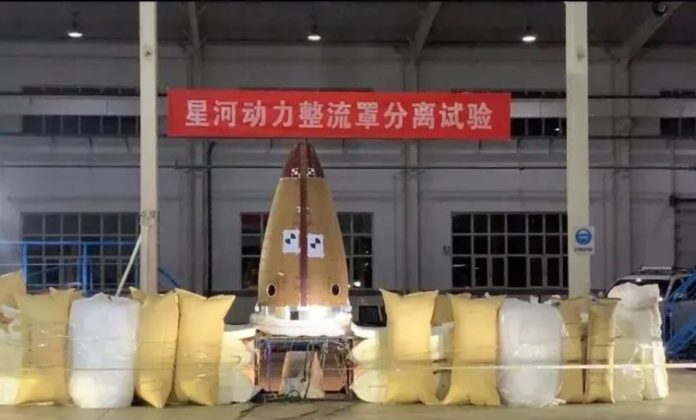HELSINKI — A variety of Chinese launching companies for the commercial space industry have reported progress in efforts to develop a variety of vehicles.
While Galactic Energy is moving to release of its Ceres-1 launcher landspace and iSpace are reporting progress using methane rocket motors. Deep Blue Aerospace has meanwhile secured early financing for development of a launch vehicle series that was liquid.
June 5, a smaller, tianque-11 , oxygen methane engine, passed 2,000 seconds of analyzing.
The motors will jointly power the 48.8-meter-tall, two-stage Zhuque-2 start vehicle. The launcher will be capable of providing a 4,000-kilogram payload capacity to a 200-kilometer low Earth orbit (LEO). Alternatively ZQ-2 can attic 2,000 kilograms to 500-kilometer Sun-synchronous orbit (SSO).
The lead writer for ZQ-2 the Tianque-12 test success is the first verification test of the engine system and control system compatibility of the launcher, confirming that the flight arrangement of the motor for propulsion technology states of landSpace. The launcher currently enters the joint compatibility test phase ancient 2021 or 2020.
Landspace was set in October 2018 made the first Chinese launching effort with its solid rocket that was Zhuque-1 and in 2015.
Reusable launcher
July 2019 iSpace, which achieved orbit made progress May.
May 19, a hot fire test was completed by the thrust JD-1 engine. The motor passed a secondary beginning test May 27, paving the way for future vertical takeoff, vertical landing evaluations. JD-1 motors will power the reusable Hyperbola-2 methlox launcher, capable of raising 1,900 kilograms to LEO.
The company aims to run 100-kilometer vertical take-off and landing tests of the Hyperbola-2 first phase later this year.
Vice president of iSpace Yao Bowen told state media after the SpaceX Demo-2 mission that”SpaceX is farther along the track, but we share its vision of finally sending passengers into space through cheap modules.”
Sexy fire evaluations of the iSpace JD-1 motor. Credit: Ceres-1 launching is closed by iSpaceGalactic Energy
Galactic Energy, based February 2018 and one of the newer Chinese private launching companies, has made progress toward its first launching. The solid rocket that is four-stage Ceres-1 will be able to lift 350 kilograms of payload.
The company this week announced (Chinese) that a successful payload fairing separation test had been performed in May. A hot fire test of the upper phase attitude control engine happened in April, using a full system upper platform cold flow test after in May.
Galactic Energy targeted a June launch of the Ceres-1 but the COVID-19 pandemic brought delays. Launch from Jiuquan is expected in the August-September timeframe.
The company procured $21.5 million in financing in December for the Ceres-1 launching and growing the Pallas-1 kerosene and liquid oxygen launching vehicle. The partly reusable Pallas-1 will be capable of launching four metric tons to LEO or 2 heaps to SSO.
Fairing separation test for the Galactic Energy Ceres-1 launcher.
The financing will be utilized for research and development, verifying vertical landing technology and testing kerosene-liquid oxygen motors.
Founded in 2017, Deep Blue Aerospace is growing the expendable Nebula-1 and recoverable Nebula-2 liquid launchers. The Nebula-1 first phase will probably be powered by nine Leiting-20 motors, using a single engine on the second phase.
The 2.25-meter-diameter Nebula-1 and 3.35-meter-diameter Nebula-2 are to be capable of lifting 500 kilograms to 500 kilometers SSO and 4,500 kilograms to LEO respectively. No date for test flights has been supplied.
Segments of the space industry opened to private capital in 2014. More than 141 registered commercial aerospace companies, developing launch vehicles, small satellite programs, remote sensing and communications satellite constellations, earth stations and various sections of distribution chains were established in China at the end of 2018, based on Chinese book Future Aerospace.
Satellite internet, Internet of intelligence and Things, 5G, to be targeted for investment and advice. Stimulate the Chinese economy and the move is considered to be an effort to improve innovation.
A military-civil fusion national strategy is encouraging and facilitating these commercial space activities. The intention is to cultivate innovation in civilian and military realms but also develop new distribution chains and lower costs.
– Advertisement –
